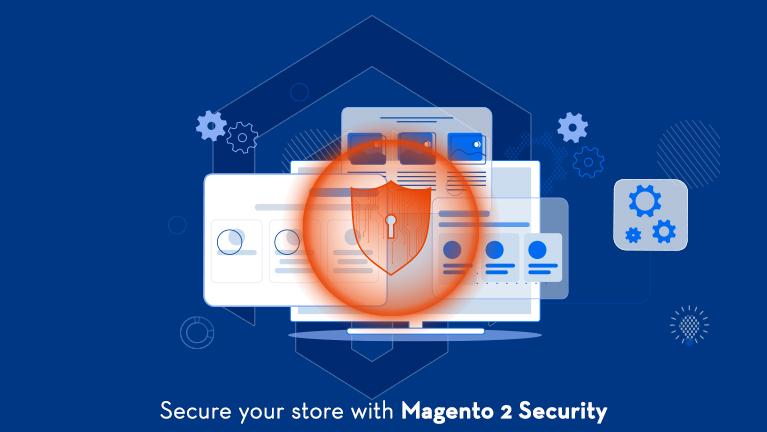Having an online store on Magento 2 shields you in many ways with its time-to-time updates and features. Yet, the current spending on site vulnerabilities won’t let you ignore it especially when Gartner estimates it $ 133.7 billion in 2022.
However, while you upgrade to Magento 2, lot’s of security practices are already done. And for full-blown Magento 2 security practices, you can thank us later.
Magento announced it for Magento EOL (End Of Life) long ago and the sound can be clearly heard now. As a Magento Development Agency, we hope you have also reached safely on Magento 2, for the sake of security.
Nevertheless, extending safety technologies are followed by stocking security threats. In such cases, it’s better to be aware of the next security practices.
The Best Magento 2 security Practices-
Protect Magento admin- Admin panel of Magento known for its handiness and efficiency. By the same way, if it’s insecure, it’s like you’re handing the cockpit to hijackers. Hackers can easily access your entire site by undertaking your admin panel. So if you don’t want them to steal or modify data, inject malware, store redirection, host malicious, protect your admin by:
Change default admin URL-
Steps-
Log in Admin Panel
Go to Stores > Configuration
Chick Advance > Admin
Expand Admin base URL section
Set “Use Custom Admin URL” to “Yes”
Enter the Custom admin URL
You will be logged out and redirected to the “New admin URL”
Limit access to the admin
Steps-
System > Permission > Users roles
Click “Add new role”
Enter username and password
Go to “Role Resources”
Select the resource access you wish to grant your new user
Click “Save Role”
After adding new users you can select specific roles
Use Updated Software-
The latest version of Magento with all the latest security patches- Magento regularly updates security patches and updates to check website potential and vulnerabilities. For that, it will be best if you regularly update these security patches, so keep your platform update and safety measures too. However, there are some steps you have to ensure when upgrading a site:
Backup code and database before changes
Change your Magento root directory into an upgraded one
Use SSH to login remote server
Commit, add and push code changes
Update your project
Verify your Magento version
Complete deployment
Updated extensions- Extensions are made to work easy, don’t use them as a burden and security threats. Ensure the safety of extension before choosing it for your site. If you are using an older one, make sure it’s upgraded. Moreover, to upgrade your Magento extension, you can follow these steps:
Create a new branch on your local workstation and then make any changes.
Disable your extensions as per requirements.
Download extension upgrades as per the availability.
Install the upgrade as documented
Test & enable extensions
Commit, add and push code changes to remote
Test in your integration environment
Push to the staging environment to test in a pre-production environment
Strict File Permissions- For preventing your file from tempting and hacking, assure your file permissions are strict. As per Magento rule book, your core file and directory should be set with the read-only setting. The 777 file permission should always be avoided, as it offers all to read, write and execute permission to all users. Rather than this, active 640, so it’s available for owners only.
Regularly Backup data- Precaution is better than cure! And this rule goes for website security also. In the case of Magneto, ensure your database and server are automatically directed to an external location. So when there is any malware attack, you have all your data in safe hands.
Activate web app farewell- By filtering and monitoring HTTP traffic between web application and internet, this is how farewell secures your site. Farewell protects your site from harmful bots, blacklisted IPs and petty users.
Disable dangerous PHP functions- Some of the PHP functions could be used to inject malicious code to site. And to ignore them, double-check disabled.
Install a security plugin- You can’t sit day-and-night over your site after security is a 24-hour job. And for that, It will be better if you use a security plugin for your site. With the help of Magento security plugin, you can focus on your business rather than worrying about security.
Conduct security audit- Cross-check is also important when it comes to every-second changeable web security. Carefully overview the VAPT report, and make any possible fixes and security lapses.
Protect your server- HTTPS/SSL are the security layers of your site while communicating with the server. Other than that, don’t install extensions directly on the server but disable Magento downloader. As another option, you can remove/block access or better if use a whitelisting method.
For some more Magento 2 Security Tips click the link you just saw.
Why magePoint for Magento 2 security?
Hope recommended Magento 2 security Practices will help you a lot to handle Magento security matters. However, ever-evolving security can never guarantee 100% and the need for a constant expert eye always required. At this point, magePoint can fill this gap between you and your site security.



